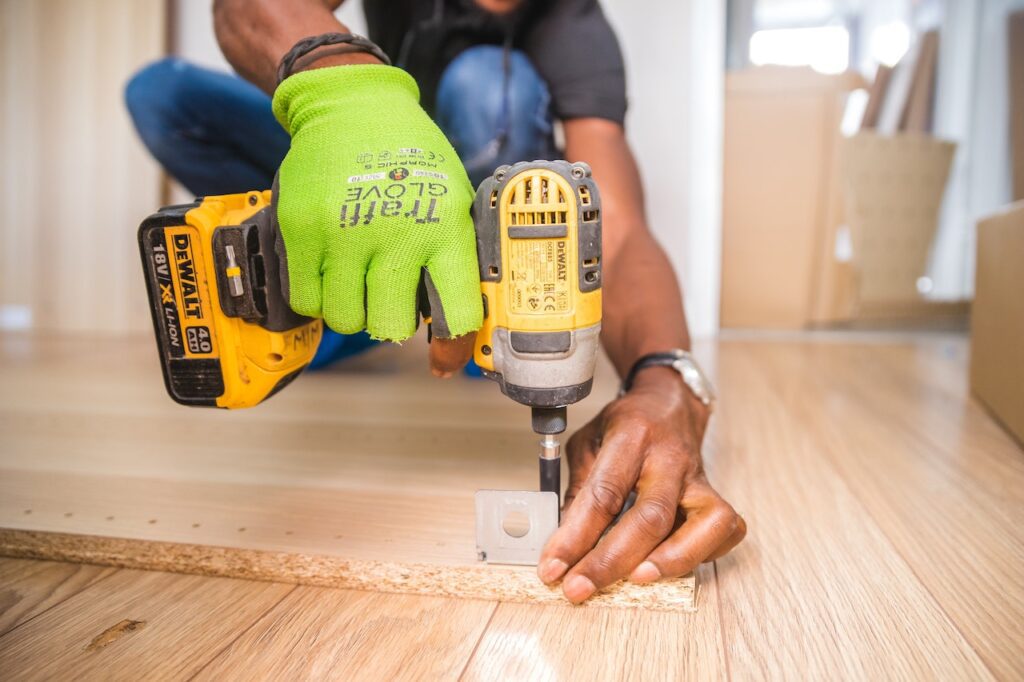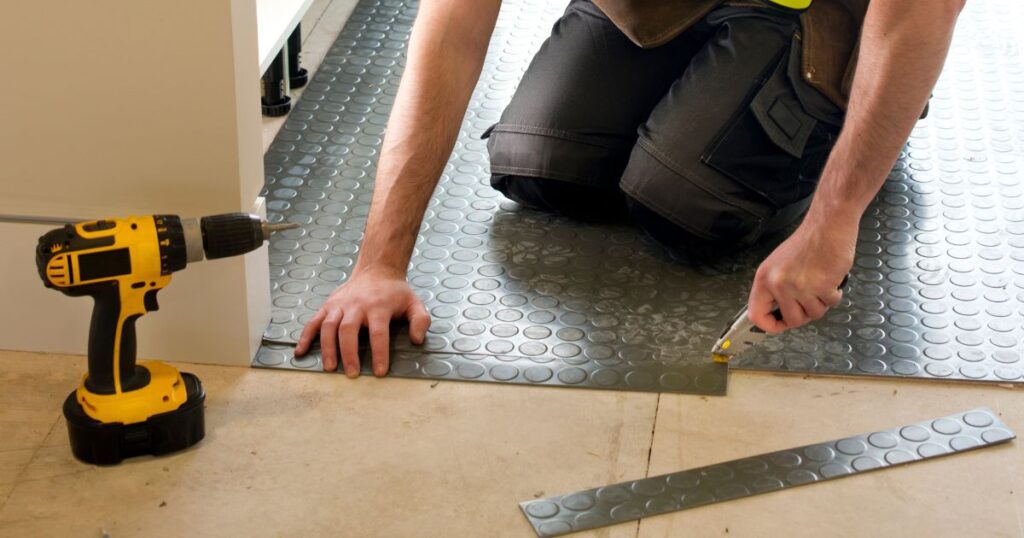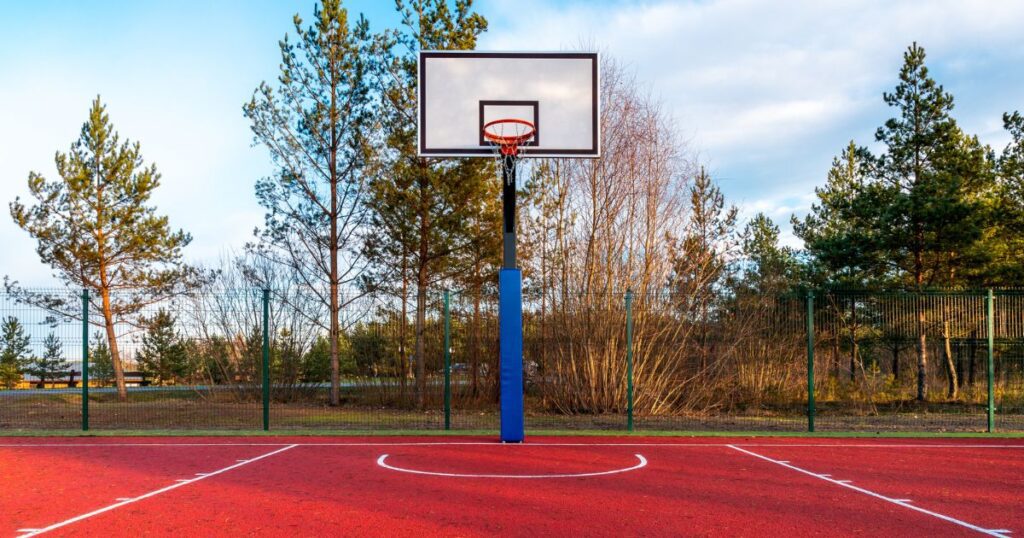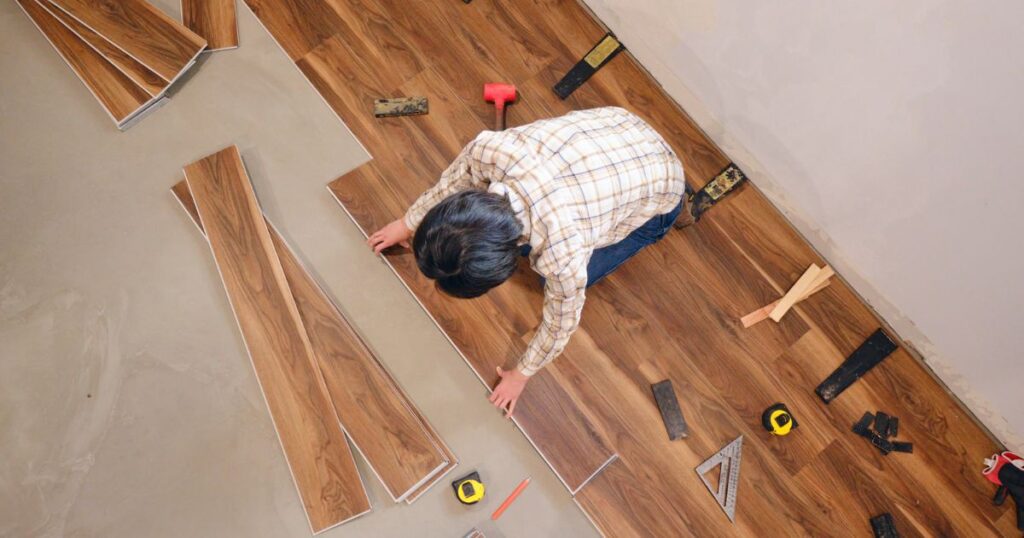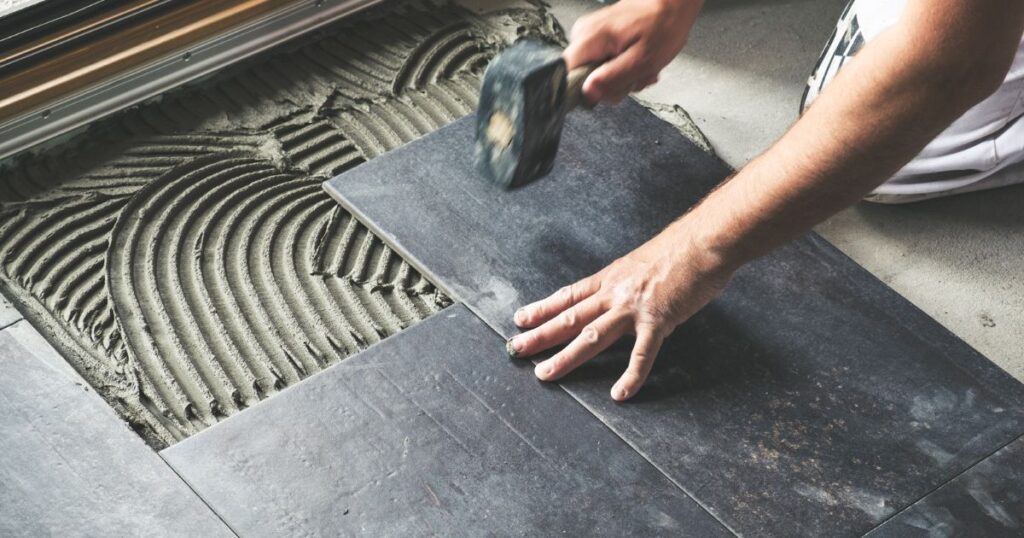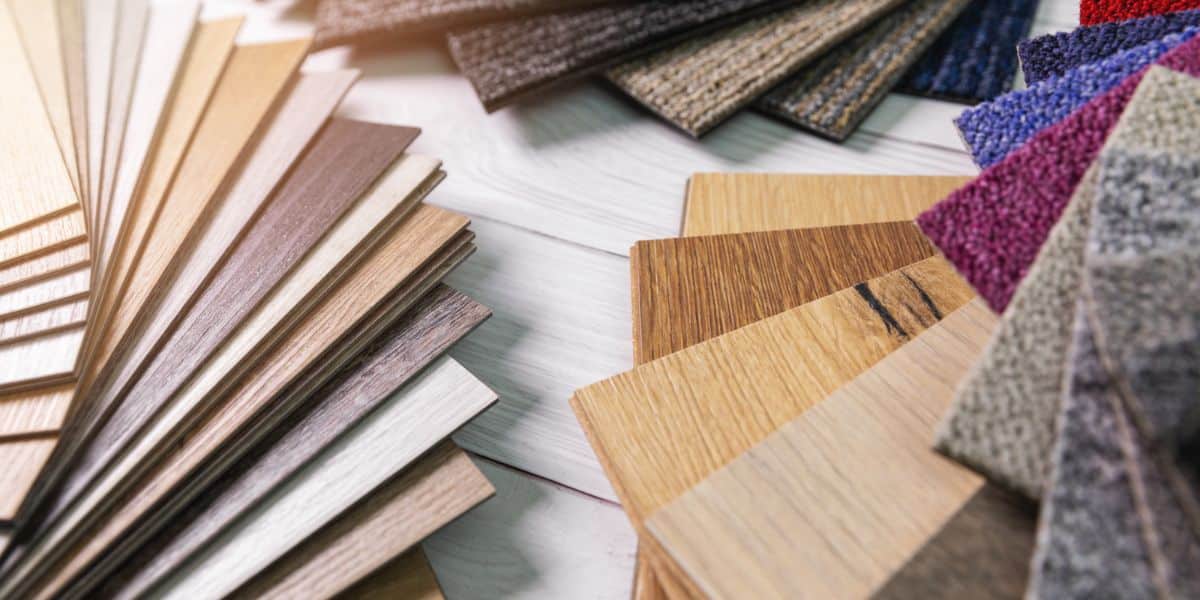
The Importance of Choosing the Right Flooring for Your Home or Office
Have you ever entered a room and felt instantly comforted by the atmosphere? It’s not just the furniture and décor that contribute to this feeling, but also the flooring. The flooring you choose for your home or office can set the tone for the entire space.
It’s important to choose a flooring option that suits your needs, taste, and lifestyle. When it comes to choosing flooring options, there are plenty of choices available in today’s market.
However, one type of flooring that has been gaining popularity lately is SPC (Stone Plastic Composite) flooring. SPC flooring is a relatively new kid on the block but has quickly become a popular choice due to its durability, affordability, ease of installation, and aesthetic appeal.
What is SPC Flooring
SPC stands for Stone Plastic Composite. This type of flooring is made up of four layers: a wear layer on top for protection against scratches and stains; an SPC core with added limestone powder for durability; an attached underlayment layer for sound absorption; and finally, a printed vinyl layer on top to give it its unique look.
One of the most significant advantages of SPC flooring is its waterproof properties, which makes it perfect for high-traffic areas such as kitchens and bathrooms. Additionally, it does not expand or contract with temperature changes like traditional hardwood floors do.
Why Choosing the Right Flooring Matters
Choosing the right type of floor can significantly impact both aesthetics and functionality in any space. For example, if you’re looking to create an industrial-style loft apartment with exposed brick walls and metal accents, concrete floors might be more fitting than carpeting or hardwood floors.
Similarly, if you have small children or pets who frequently spill liquids or make messes on floors, then waterproof SPC floors would be an excellent choice for your home. In contrast, if you’re looking to create a more elegant and classic feel in your home, then hardwood floors may be the way to go.
In short, choosing the right flooring is crucial in creating a comfortable and functional space that suits your needs and taste. With so many options available today, it’s essential to do your research and find the type of flooring that fits both your practical requirements as well as your aesthetic preferences.
RELATED: Common Mistakes When Laying Laminate Flooring
What is SPC Flooring?
If you’re in the market for a new flooring option, you may have heard about SPC flooring. But what exactly is it?
SPC stands for Stone Polymer Composite, which means that it is made up of a mixture of limestone powder, polyvinyl chloride (PVC), and stabilizers. The resulting product is an extremely durable and water-resistant material that is perfect for areas with high foot traffic or exposure to moisture.
Definition and Explanation
SPC flooring is often referred to as rigid core vinyl flooring because of its sturdy construction. The layers of the material are pressed together under extreme heat and pressure to create a strong bond that can withstand wear and tear. The top layer of the material is designed to mimic the look of real wood or stone, while the bottom layers provide stability and support.
How it Differs from Other Types of Flooring
One way that SPC flooring differs from other types of flooring, like hardwood or laminate, is its composition. Hardwood floors are made from real wood, which can be susceptible to water damage and scratches. Laminate floors, on the other hand, are made up of synthetic materials that can warp or buckle under extreme heat or moisture.
In contrast, SPC floors are completely waterproof, making them ideal for use in bathrooms or kitchens where spills and splashes are common occurrences. They also have a higher density than other types of vinyl flooring, which means they are more durable and resistant to dents or scratches caused by heavy furniture.
Benefits of Using SPC Flooring
One major benefit of using SPC flooring is its durability. Because it consists of multiple layers pressed together under intense heat and pressure, it’s able to withstand high levels of foot traffic without showing signs of wear over time. Additionally, because it’s completely waterproof, it’s resistant to mold, mildew, and other types of water damage.
Another benefit of SPC flooring is its versatility. It can be installed over a variety of different subfloors, including concrete and existing vinyl or tile flooring.
And because it comes in a wide range of colors and patterns, it can be customized to fit the design aesthetic of any space. SPC flooring is relatively easy to install and requires little maintenance beyond regular cleaning with a damp mop or vacuum.
Composition and Layers
When it comes to SPC flooring, the layers that make up the product are crucial to understanding its benefits and durability. SPC stands for Stone Plastic Composite, which is a rigid core made of limestone powder, PVC, and stabilizers. This combination of materials makes for a highly durable and long-lasting flooring option.
The top layer is an ultra-thin wear layer that protects against scratches, stains, and fading. The middle layer is where the strength of the SPC flooring lies.
It consists of a high-density composite core that provides stability, rigidity, and resistance to impact damage. This core helps prevent any sway or movement in your floors when you walk on them or move heavy furniture around.
The final layer is an attached underlayment that provides cushioning underfoot as well as sound reduction. This underlayment also helps with moisture resistance.
Understanding each layer’s purpose will help you choose the right type of SPC flooring for your needs. For example, if you live in an area with high humidity levels or frequent spills, then choosing an SPC floor with a thicker wear layer would be ideal.
The Top Layer: Ultra-Thin Wear Layer
The top layer of SPC flooring is critical for both appearance and performance. The wear layer protects against scratches from pets’ claws, high heels, shoes or items being dropped on the floor surface while also providing resistance to UV rays that can cause fading over time. It’s important to note that not all wear layers are created equal; some have a thicker protective coating than others, making them more durable but also more expensive.
The Middle Layer: High-Density Composite Core
This middle layer is what gives SPC flooring its rigidity and strength compared to other types like vinyl or laminate floors which may have more flex or give when weight is applied unevenly on them (such as walking with heels or placing heavy furniture pieces). It’s important to choose this layer carefully depending on your needs; a thicker core may be more resistant to impact damage, but it also means you will have a higher installation cost.
The Bottom Layer: Attached Underlayment
The final layer of SPC flooring is an attached underlayment, which is essential for cushioning and noise reduction. The cushioning underfoot makes the floor more comfortable to walk on while also helping with sound reduction making it an ideal choice for rooms that require a quieter atmosphere like bedrooms or libraries. This underlayment also helps with moisture resistance, which is important in areas where water spills or high humidity can occur.
The Installation Process
Once you have chosen the perfect SPC flooring for your space, it’s time to install it. Installing SPC flooring can be a DIY project for those who are handy and have experience with home improvement projects. However, if you’re not comfortable with DIY projects or don’t have the necessary tools, hiring a professional installer is recommended.
Overview of How to Install SPC Flooring
The first step in installing SPC flooring is to prepare the subfloor by removing any existing flooring materials and ensuring that it is clean, dry, and level. Next, acclimate the flooring in the room where it will be installed for at least 48 hours before installation. The next step is to lay out the planks according to your desired pattern.
Make sure to leave an expansion gap of at least ¼ inch around all walls or fixed objects in the room. Once you have your layout set, start installing the planks from one corner of the room and work your way across.
Tools Needed for Installation
One of the benefits of SPC flooring is that it can be installed using basic tools that are readily available at most hardware stores. You’ll need a measuring tape, a straight edge or chalk line for marking cuts, a utility knife or saw for cutting planks to size, as well as a tapping block and rubber mallet for locking planks into place. If you’re installing SPC over concrete subfloors or on upper floors of buildings with noisy neighbors below, consider using an underlayment such as cork or rubber to help reduce sound transmission between levels.
Tips for a Successful Installation
Here are some tips that will help ensure that your installation goes smoothly:
- Always follow the manufacturer’s guidelines for installation. These guidelines will provide specific instructions for preparing the subfloor, laying out the planks, and locking them into place.
- Use a tapping block and rubber mallet to lock planks into place. Do not use a hammer directly on the planks as this can damage them.
- Make sure to leave an expansion gap around all walls or fixed objects in the room. This gap should be at least ¼ inch wide.
- Avoid installing SPC flooring in areas with high humidity or moisture, such as bathrooms or laundry rooms. If you do decide to install SPC flooring in these areas, be sure to use a moisture barrier and seal all edges with silicone caulking.
- If you’re not comfortable installing SPC flooring yourself, consider hiring a professional installer. A qualified installer will ensure that your floors are installed properly and will last for years to come!
By following these tips and guidelines, you’ll be able to install your new SPC flooring with confidence and enjoy its many benefits for years to come!
Maintenance and Care
How to properly care for your SPC floors
SPC flooring is a popular choice because of its durability, but proper maintenance is still necessary to ensure it lasts for many years. The first step in maintaining your SPC floors is to regularly sweep or vacuum them to remove any dirt or debris.
This will help prevent scratches or damage from occurring over time. In addition to regular cleaning, it’s important to wipe up any spills or stains immediately.
SPC flooring is water-resistant, but it’s still important to avoid leaving liquids on the surface for extended periods of time as they can seep into the seams or under the planks. Use a damp cloth or mop with mild soap and water for a deeper clean, and avoid using harsh chemicals that could damage the surface.
Cleaning techniques and products to avoid
When cleaning your SPC floors, there are certain techniques and products that you should avoid in order to maintain their longevity. Avoid using abrasive scrubbers or steel wool as these can scratch the surface of the planks. Instead, use a soft-bristled brush attachment on your vacuum cleaner or a microfiber mop.
It’s also important to avoid using harsh chemicals like bleach, ammonia, or vinegar, as they can strip away the protective layer on top of the planks. Stick with products specifically designed for use on SPC flooring and follow instructions carefully.
Tips for maintaining the durability and longevity of your floors
While proper cleaning methods are essential in maintaining your SPC floors, there are additional tips you can follow for optimal durability and longevity. It’s recommended that you place felt pads under furniture legs so they don’t scratch the surface when moved around. Another tip is to place rugs at entryways to catch dirt and debris before it gets tracked onto your flooring.
You should also consider investing in a humidifier to maintain a consistent level of humidity in your home, as extreme swings in temperature and moisture levels can cause the planks to expand or contract, leading to damage over time. By following these tips and properly maintaining your SPC floors, you can enjoy their beauty and durability for many years to come.
RELATED: The Beauty of VCT Flooring: An Expert’s Opinion
Style Options
One of the greatest advantages of SPC flooring is the wide range of styles and designs available. You can choose from a variety of colors, textures, and patterns to match your decor or create a unique look for your space.
For those who love the look of hardwood floors but want something more durable and cost-effective, SPC flooring offers a realistic wood-look design that mimics the natural beauty of hardwood without any of the maintenance or upkeep. The planks come in different sizes, making it easy to use them in different areas of your home or office.
You can even choose between distressed looks or more polished finishes. If you prefer something more modern and sleek, there are also SPC flooring options that resemble concrete or stone.
These are perfect for creating an industrial-chic vibe in any room. They come in cool shades like grey and black, which make them perfect for minimalist spaces.
Choosing The Right Style For Your Space
When choosing a style for your SPC flooring, you want to consider the existing decor and color scheme in your space. If you have dark furniture or walls, consider lighter-colored floors to create contrast. If you have lighter furniture or walls, consider darker floors to add depth.
The size of your space should also be taken into account when choosing flooring style. Smaller rooms may benefit from lighter-colored floors as they help create an illusion of openness, while larger spaces can handle darker colors as they tend to anchor the room better.
Keep in mind that SPC flooring is not only durable but also versatile; this means that you can mix different styles within one space if done right! For example, you could install wood-look planks next to concrete-looking tiles on either side of a kitchen island for an interesting kitchen floor design.
Variety in Colors, Patterns, and Textures
SPC flooring comes in a variety of colors, patterns, and textures to suit every taste. You can choose from a range of wood-look designs, including oak, maple, cherry, or walnut finishes. For those who want a more rustic look, there are distressed finishes available that bring out the natural knots and grains in the planks.
If you’re looking for something unique and eye-catching, SPC flooring also comes in bright colors such as red or blue. These are perfect for playrooms or home gyms where you want to add a pop of color to your space.
Textures can also make an impact on the look and feel of your floors. The embossed finish can add depth, while smooth surfaces can create sleek modern tones.
For those who prefer something more tactile underfoot, there are also textured options like wire-brushed ones, which give off an aged-sophisticated look. With so many styles and designs available in SPC flooring, it’s easy to find the perfect fit for your home or office that combines durability with style!
Cost Comparison
When it comes to choosing flooring for your home or office, cost is always a big consideration. SPC flooring seems to be a little more expensive than other types of flooring, but the costs vary depending on the quality you choose.
The higher-end options can be more expensive than lower-end options like laminates or vinyl floors. However, despite being a bit pricier compared to some other flooring types, SPC flooring offers superior durability and longevity compared to those cheaper alternatives.
Comparison between different types of floorings with respect to cost.
Hardwood floors are one of the most expensive options out there because they are made from real wood and require special installation. Laminate floors can be cheaper than hardwood but are generally less durable and have a shorter lifespan. Vinyl plank floors may seem like the most affordable option, but they may not be worth investing in if you’re looking for something that will last longer.
Factors affecting cost.
The price of SPC flooring depends on several factors, such as the thickness of the planks, the quality of materials used, and design features. While it’s tempting to go for something cheap, it’ll likely end up costing you more in repairs and replacing in the long run.
Why is it worth investing in?
Investing in SPC flooring is worth it because it is durable, long-lasting, and requires minimal maintenance over time. You won’t have to worry about replacing your floors every few years as you would with vinyl or laminate floors—SPC floors can last up to 50 years!
Additionally, they’re waterproof which makes them ideal for bathrooms and kitchens where spills are common. : while SPC flooring may seem a bit pricier compared to some other options out there initially, its durability makes it an excellent investment over time.
Frequently Asked Questions
Is SPC flooring good for residential?
SPC flooring is an excellent choice for residential applications due to its durability, water resistance, and ease of maintenance, making it suitable for high-traffic areas and moisture-prone spaces like kitchens and bathrooms.
How long will SPC flooring last?
With proper installation and maintenance, SPC flooring can last for many years. On average, SPC flooring can have a lifespan of 10 to 20 years or more, depending on usage and care.
Is SPC flooring good or bad?
SPC flooring is generally considered a good flooring option due to its many advantages, such as high durability, water resistance, ease of installation, and a wide range of design options.
Why use SPC flooring?
SPC flooring is preferred for its exceptional durability, water resistance, and ability to withstand heavy foot traffic, making it suitable for both residential and commercial applications.
Is SPC flooring termite-proof?
SPC flooring is not prone to termite damage as it is made of synthetic materials that termites do not feed on, offering an added benefit of termite resistance compared to natural wood flooring.
Is SPC better than tiles?
SPC flooring offers several advantages over traditional tiles, including better durability, resistance to cracking or chipping, easier installation, and a more comfortable underfoot feel due to its cushioning properties.
Conclusion
When it comes to choosing flooring for your home or office, SPC flooring is a solid choice. Not only does it offer superior durability and longevity compared to other types of flooring, but it’s also easy to maintain and comes in a variety of stylish designs.
While the initial cost may be higher than other options out there, investing in SPC flooring is worth it because you’ll save money on repairs and replacements over time. With its waterproof properties and long lifespan, SPC flooring is the perfect flooring option for anyone looking for something that will truly stand the test of time.
RESOURCE: National Tile Contractors Association: Education and Certification

